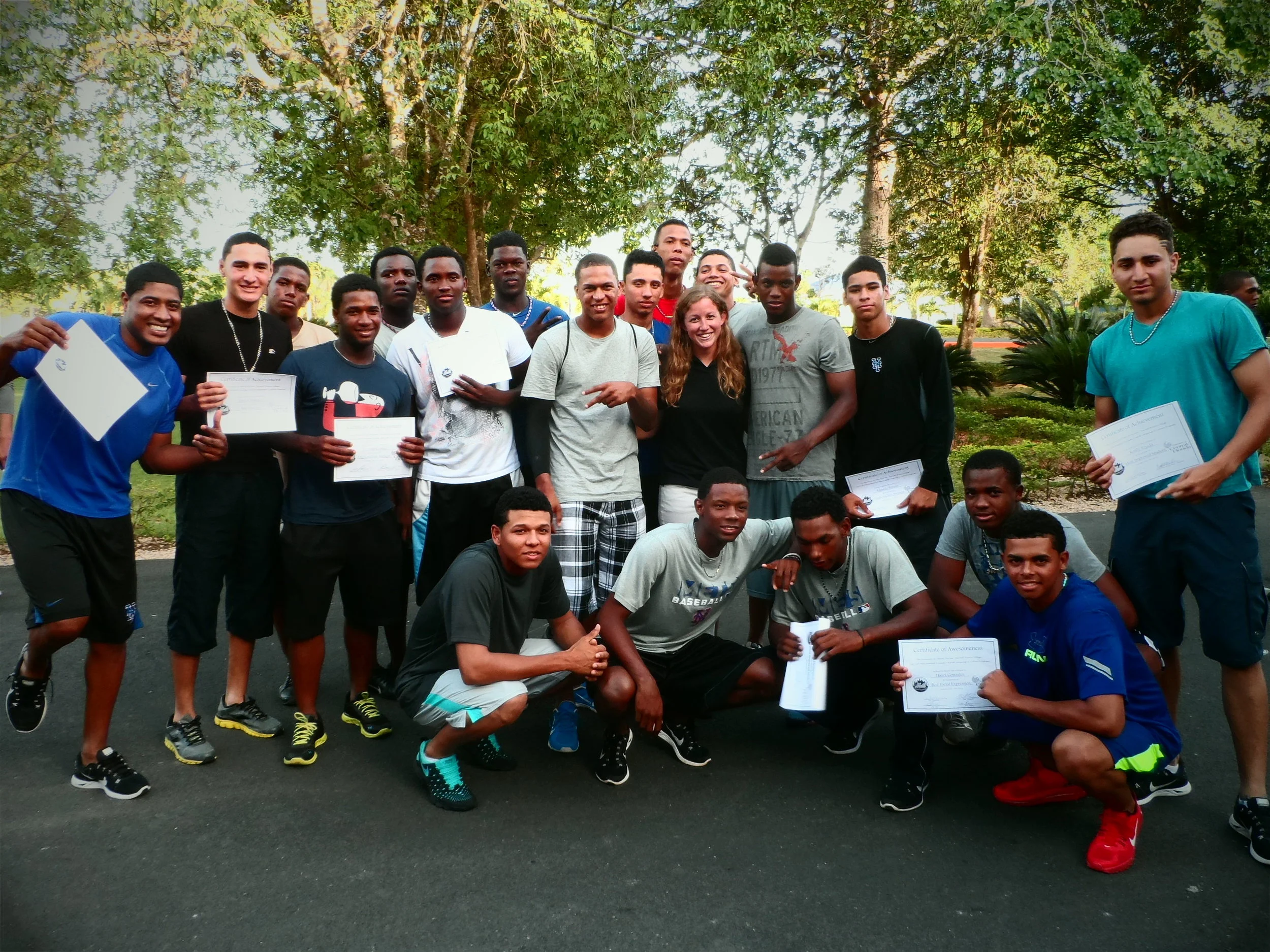Balance in the Classroom
Originally posted on August 23, 2014 on my tumblr.
Today I thought I’d discuss one of my biggest challenges in the classroom in the DR: finding balance in the classroom. The nature of this challenge probably varies from class to class based on the students and their situation. At the Mets complex, the balancing act was making English class that was engaging but without being physically demanding, because by the afternoon, my students had been outside playing baseball in the hot Dominican summer sun pretty much the entire time that the sun had been in the sky. They woke up between 5 and 6am, ate breakfast, and then practiced or worked out almost nonstop until 10:30, when the games always started. These games typically lasted until between 1:30 and 2:30pm, when the guys could eat lunch and relax until class at 4:00. That is, unless they played to extra innings in the game, or had mandatory counseling sessions with the sports psychologist, or needed to attend workshops with other educational organizations, or had any other meetings or appointments. Often, the guys came to class without having had any free time in the entire day from the moment they’d woken up, so they were exhausted both physically and mentally. The result of the day’s game was always easy to tell based on their morale in class, but even on victory days, they began every class complaining about how tired they were.
At this point in their day, it was my responsibility to teach them English for an hour. To keep them interested, I would play a lot of games. However, I soon learned that this only worked if the game did not require a lot of getting up or moving around. The times I tried to play relay race games or a musical chairs game, I was met with resistance. For some of them, any activity with winners and losers could make them forget their weariness momentarily because they’re so competitive, but at the end, the losing team would still be bitter and resentful to the point that I didn’t feel like the learning benefit of the game outweighed the discord it sowed in the classroom or the redoubled complaints about how tired they were.
Many of my ideas were, to use a baseball metaphor, a swing and a miss. It was a struggle to figure out how to let them sit back and enjoy the air conditioning but still keep their minds working. However, with time, I began to find ways to strike that balance and create a class atmosphere that was both engaging and relaxing. I learned how to gauge their moods and enthusiasm levels, and from there I could judge what activities they would be willing to do that day. I often came to class with two or three different practice games in mind, and picked whichever one seemed most appropriate to their energy level that day.
While I tried to switch up class and do something entirely different at least once a week, we did settle into a general routine shaped by my experiences learning to strike this balance. Most classes went as follows:
- Review game. They had to answer questions or explain concepts from the day before. This usually involved some kind of speed element, but did not require them to get up out of their seats, and it did not involve two teams competing against each other.
- New concepts. This was when I introduced whatever new vocabulary or grammar we would be using that day, by using lots of examples on the whiteboard. They generally took notes at this point in class without being prompted.
- Structured practice. Typically this involved taking turns by throwing a stress ball around the room until everyone had used the new material in a sentence at least once. I wanted to make sure I heard every individual actually speak in English every day.
- Real life examples. If we had the projector and speaker that day, I would find a movie clip or song or restaurant menu, etc. that showed them exactly how they would see that piece of English related to baseball or to living in America.
- Activity or game. The best games were those that involved a competitive element but avoided situations where they could blame each other too much. Unless the energy levels were unusually high that day, these games didn’t involve too much getting up and moving around. The most popular was bingo, but my personal favorite was when we practiced body parts in English by racing to label each other.
So that was my experience of learning to strike a balance in class that maximized my students’ interest and willingness to participate despite their exhaustion. It was a constant process of trial and error and adaptation, and even though we found a routine that seemed to work, there was still plenty of room for improvement by the end. This challenge was pretty specific to this teaching situation since most English classes aren’t full of stubborn and overworked teenage professional athletes, but I think it taught me valuable lessons about the importance of flexibility and empathy in the classroom, and how being a teacher is just as much a learning process as being a student.





